
Issue 077
July 2011
Attempting to intimidate foes via the spoken word isn’t exclusive to the ring. FO traces the greatest verbal technicians in sports history,
Welcome to the vicious cycle of verbal violence. The confrontational nature of a fight often leads to trash talk, and testosterone-fueled trash talk usually leads to a fight, regardless of the terrain.
At six-foot-seven and an ungainly 190lb, NBA star Reggie Miller was never a fighter in the purest sense, yet his gift of the gab and uncontrollable desire to get under the skin of the opposition frequently led to many on-court scraps, of both the verbal and physical variety. Upon being refused a customary pre-match handshake with John Starks in game three of their 1993 playoff series, Indiana Pacers’ Miller proceeded to tap-dance on the last nerve of the New York Knicks guard for every second of their time together on court. He teased Starks with and without the ball, and pushed, poked, prodded and played with the famously hot-headed Knick to the point of distraction and then eruption. Unable to match Miller physically or verbally that night, Starks eventually waved the white flag in the form of a head-butt in the third quarter. Agent provocateur Miller reacted as though shot in the eye by an AK-47, Starks was duly ejected from the game and burly Knicks team-mate and star player Patrick Ewing had to be refrained from tossing his guard up and out of Madison Square Garden on the basis of sheer stupidity. Miller won. More importantly, the Pacers won.
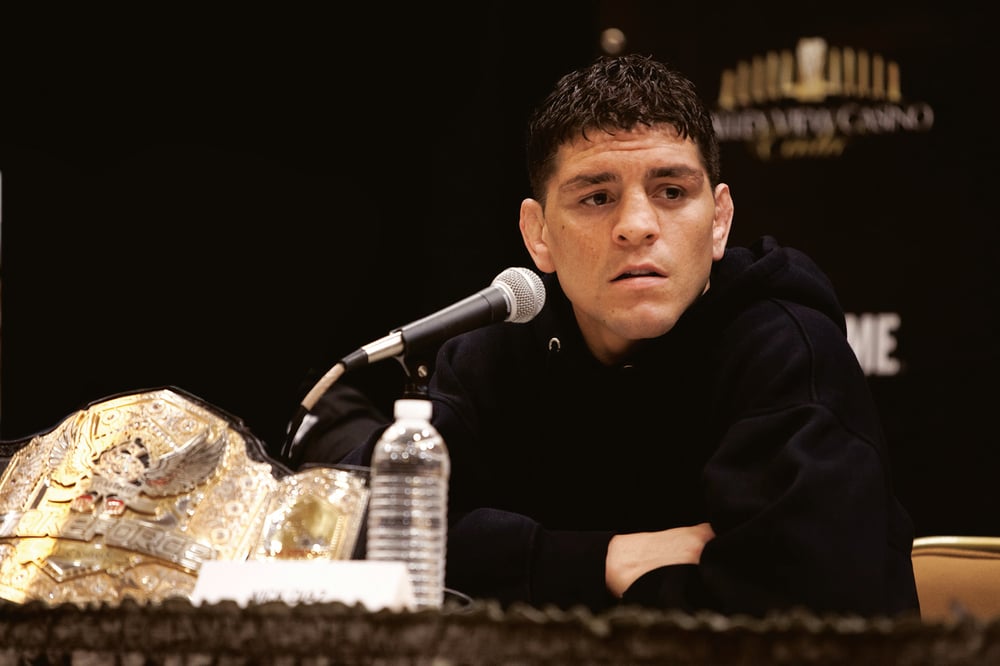
Many years later, Miller, a renowned on-court wind-up merchant, would attribute 30% of his patented trash talk to the pursuit of distracting his opponent, while 70% of the chat was used for self-motivation purposes. Meanwhile, many notable mixed martial artists – not least of all Pancrase legend Bas Rutten and UFC welterweight top dog Georges St Pierre – claim a fight is 10% physical and 90% mental. Therefore, without consulting a calculator, this means a significant chunk of athletic success is determined by one’s ability to talk, dupe, rile and antagonize long before tip-off, kick-off or the first bell.
Interestingly, the idea of a sportsman utilizing their voice to shift the momentum of combat was something first practiced by a black man without a voice in the early 1900s.
Boxing’s first black heavyweight champion of the world, the venerable Jack Johnson, was, at the time, also the most unpopular and derided titleholder in the sport’s rich history. White America couldn’t stand having Johnson represent sport’s grandest prize and, indeed, this sense of discontent even prompted former white champion James J Jeffries to come out of retirement in 1910 and claim: “I am going to fight Johnson for the sole purpose of proving that a white man is better than a Negro.” The pre-fight trash talk was politically motivated and reflected society at large during that time. Jeffries was talking and fighting for his people, while Johnson was doing the same for his. In fact, rather than pander to the overwhelming hate and desire to see him dethroned, Johnson by that stage reveled in his position as dominant black anti-christ. He lived the high life as a jazz musician, nightclub owner and stage actor, and frequently dated desirable and famous white women of his time.
White America wanted their sense of pride back and Jeffries was deemed the man capable of restoring it. Alas, Johnson, as was his way, thrived on the sense of danger and used it to fuel his own performance on a scorching July afternoon in 1910. En route to a 15th-round stoppage victory, Johnson even had the audacity to showboat and trash talk Jeffries, imploring his battered foe to, “Do something” and “Let me see what you’ve got.”
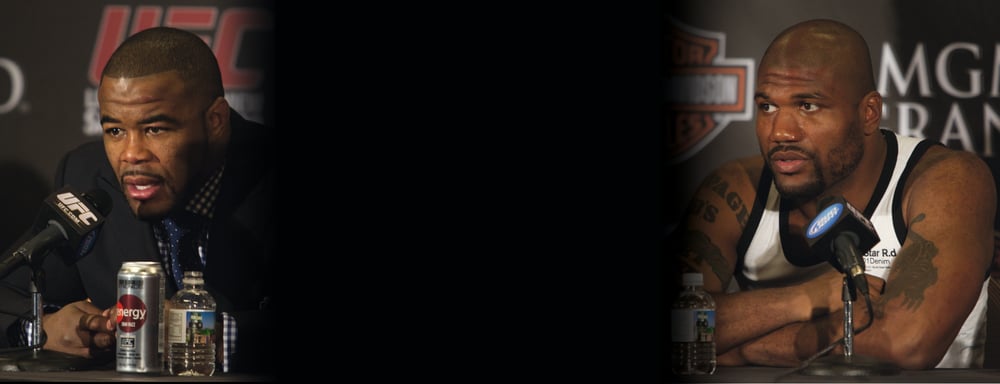
The black champion was trash talking before it became a pre-fight fashion accessory and was doing it at a time when America was at its most unforgiving. His taunts were a sign of unshakeable dominance, yet also exhibited a deep-rooted anger for the way in which he and his race had been treated and disrespected for generations. Johnson wasn’t just trash talking Jeffries that July afternoon, he was addressing America.
While still heavily involved in the politics of his day, another black heavyweight champion, Muhammad Ali, added fun, flair and creativity to the art of trash talking in the 1960s and ‘70s. Aptly nicknamed ‘The Louisville Lip’, a teenage Ali was every bit as famous for the speed of his tongue as he was for the speed of his punches.
It was while Ali was still known as Cassius Clay, however, that he first realized how big a part trash talk could play in his interchangeable careers as fighter and entertainer. George Wagner was 46 years of age the morning Clay first met him at a Las Vegas radio station in 1961. He was also better known as ‘Gorgeous’ George, one of the foremost American stars of the first golden age of professional wrestling in the 1940s and ‘50s. On air to hype up his bout with Classy Freddie Blassie, George claimed: “(If I lose) I’ll crawl across the ring and cut my hair off – but that’s not going to happen, because I’m the greatest wrestler in the world.”
Eager to see whether George would indeed have to shave off his cherished locks, Ali watched him wrestle later that night in front of a sold out Vegas crowd. “I saw 12,000 people coming to see this man get beat, and his talking did it,” the future heavyweight champion would later say. The following evening Ali boxed a grueling 10-rounder with Hawaiian Duke Sabedong in front of a crowd of 1,200. From that moment on, Ali made a conscious effort to open his mouth.
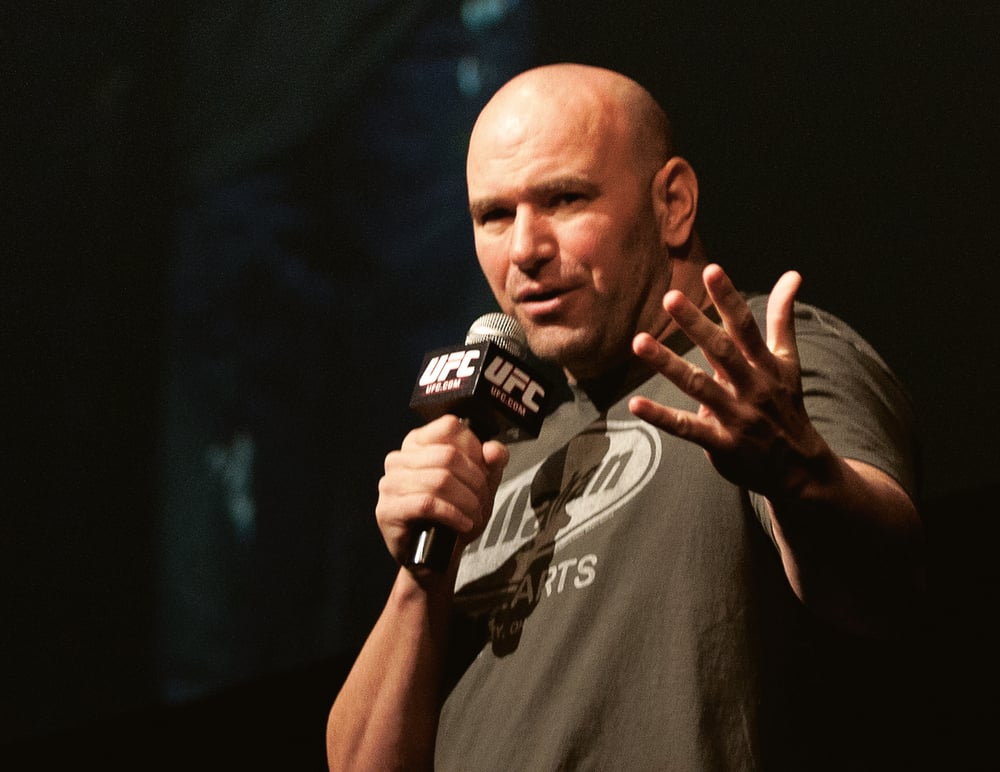
In the many years before and since, nobody has come close to matching Ali’s trash talk for sheer wit or imagination. Many of his putdowns are etched on our collective consciousness and are scribbled on millions of posters, T-shirts and fridge magnets throughout the world. For the most part, he ridiculed opponents with a flair and audacity that would draw even a reluctant smile from the victim. The stereotype pitched Ali as a flat-nosed and slow-witted pug, yet he rapped and rhymed like a street poet with an Ivy League education.
Not everybody saw the funny side, of course. Joe Frazier resented being labeled an ‘Uncle Tom’ for years after it was first said, George Foreman took umbrage to being tagged a ‘Mummy,’ while Ernie Terrell and Floyd Patterson suffered the biggest beatings of them all for refusing to call Ali by his Islamic name. He soundtracked bitter blows against Terrell’s skull with a chorus of “What’s my name, ‘Uncle Tom’, what’s my name?” while Patterson was branded the “technicolor white hope.”
At times Ali was able to be both beautiful and barbaric with his putdowns. Opponents felt undermined and embarrassed by a more loquacious and intelligent champion, while fans enjoyed listening to Ali’s rhymes and witnessing where on the chopping block the braggart would next place his head. “I’ve got to win tonight,” said a 19-year-old Ali on the eve of his eighth paid outing against Alonzo Johnson. “I talk too much to lose.”
The idea of setback never crossed the minds of professional wrestlers, yet many revolutionized and polished the art of trash talking once their sport found a place on the new wide-reaching platform of television. Scripted and calculated to a meticulous degree, wrestlers utilized trash talk for promotional purposes, as opposed to any personal gain. Investing just as much in story-lines as athletic prowess, fans snared tickets and ordered pay-per-view events on the basis of how strongly two wrestlers could sell a dispute with taunts and putdowns. The more personal the beef, the more tickets sold.
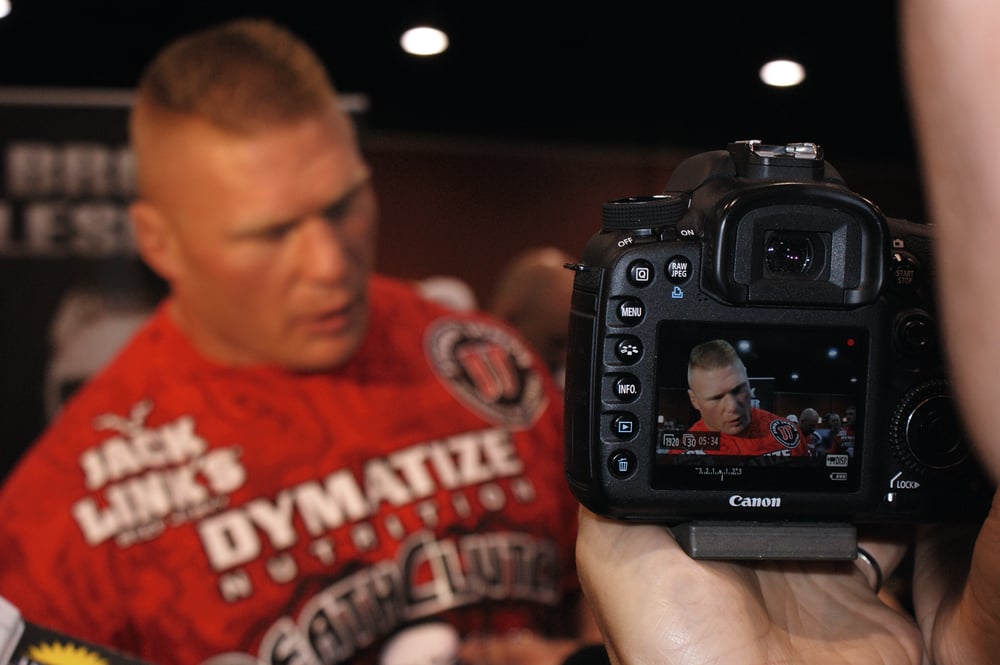
Whether so-called ‘real’ combat sports – namely boxing and then later mixed martial arts – were re-inspired by WWF president Vince McMahon and company in later years is up for debate, but there can be little doubt the showmanship element seeped into the Ultimate Fighting Championship (UFC) at its birth in 1993. Although void of scripts and plot-lines, the first UFC events attracted exponents from the worlds of boxing, jiu-jitsu, sumo, karate, wrestling and so on, each as diverse in personality as they were in skill-set. During pre-fight promo videos these fighters spoke with exaggerated hand gestures, growled with elevated aggression and arrived in all manner of memorable shapes and sizes. They seemed prompted to talk up their own abilities, the danger involved in this new no-holds-barred phenomenon and thus attract as many pay-per-view buys through word of mouth as possible. An edgy, controversial and widely panned spectacle to begin with, mixed martial arts, in its original incarnation, was a sport eager to use trash talk itself in order to spread the unholy word amongst America.
Now an established and respected sport throughout much of the world, MMA has, of course, grown up and legitimized itself as an intriguing blend of boxing realism and wrestling theatrics. It has taken the best of both sports and combined them to become the premier combat sport in the eyes of most within the crucial 18-to-30 age bracket. But how? Perhaps it’s because it’s 2011 and never has the world been more interactive, confrontational and open to trash talk. Fighters can now sell fights anywhere and anyhow they want – via video, webcam or social messaging sites – and do so with a desire to motivate their own performance, berate an opponent and line their pockets.
Mixed martial arts now contains some of the slickest trash talkers to have ever put on a pair of gloves and tight shorts. Some are college educated, intelligent and clearly took a business lesson or two on the way, while others were tutored from the combat handbook and have been influenced by fighting forefathers who achieved greatness through visibility.
Middleweight contender Chael Sonnen’s press conferences and interviews are often more entertaining than much of the middleweight roster’s actual fights, while Josh Koscheck, Brock Lesnar and Michael Bisping are the definitive love-hate fighters of 2011. Not only that, the UFC in particular have, with the aid of testosterone and trash talk, laid on some of the greatest grudge matches of the television age. Fights between Tito Ortiz and Ken Shamrock, Ortiz and Chuck Liddell, Rampage Jackson and Rashad Evans and Frank Mir and Lesnar all became more desirable events as a result of pre-fight bluster.
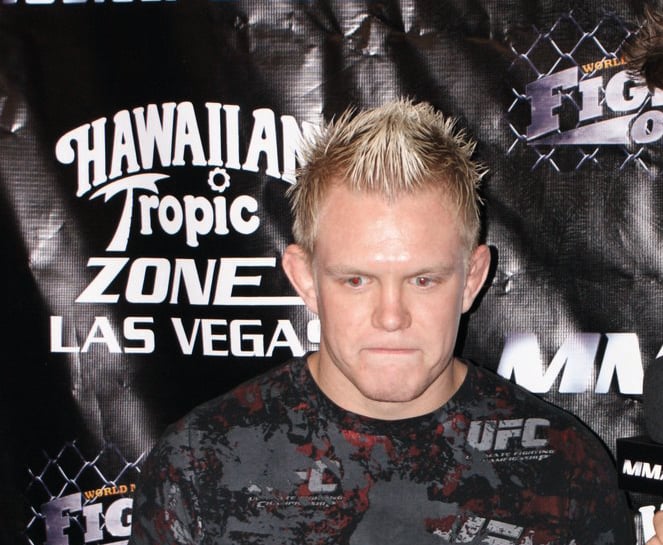
Such is the evolution of both the sport and technology itself, fighters no longer have to take their beef to the streets, either. They can play out the spat behind a computer screen and color the dispute in a way that many trash-talking pioneers would have simply been unable to. Take, for example, the 2009 battle between welterweights Dan Hardy and Marcus Davis, a fight settled in the Octagon, but started in the Photoshop editing suite. Having both talked and taunted their way into a fight, Hardy, the brash Brit with his finger on the promotional pulse, decided to rile Davis further with a string of strategically doctored photographs of ‘The Irish Hand Grenade’ in compromising positions and situations. In the process, a normally run-of-the-mill clash between two decent contenders became the most hotly anticipated grudge showdown of the year.
“I’m always looking to engage my opponent in a mental battle ahead of a fight,” explained Hardy, who eventually defeated Davis via decision in Germany. “I like to test how they’ll react under pressure, and I enjoy getting inside their head. That fight with Davis presented me with another opportunity to play with the emotions of my opponent, and as soon as we reached the stage where Marcus openly said he ‘hated’ me and wanted to ‘punch my face into dust’, I knew the fight was won. I realized Marcus was an emotional guy and knew I’d rattled him.”
Hardy is part of a new breed of fighter who realize that in 2011 it’s just as important to be as loud with one’s mouth as it is with one’s fist. In order to become ‘The Ultimate Fighter’, so to speak, you need to either excel in the fighting department or create a personality so distinctive and outrageous that fans, though they may try, will never forget your name and boasts. You know the types – Chris Leben, Josh Koscheck, Junie Browning, ‘Bruce Leroy’ and, erm, Kimbo Slice. Each of them talked a great fight and, regardless of whether they backed up the prophecies or not, were remembered long after their final nugget of knuckle-headed nonsense. After all, even if a fighter doesn’t have the required talent to be Ali, Gorgeous George isn’t a bad alternative. As ‘The Greatest’ himself once famously said:
“Silence is golden, when you can’t think of a good answer.”
TRASH TALKERS
“He’s a f**king school teacher... If I was going to fight him I’d be pretty damn confident. I’m going to fight a teacher not a fighter. There are plenty of teachers I wanted to beat up.” Nick Diaz on Rich Franklin
THE TOP 10 GREATEST MUHAMMAD ALI ZINGERS
- “I’ve seen George Foreman shadow-boxing, and the shadow won.”
- “I’ll beat him so bad he’ll need a shoehorn to put his hat on.”
- “Joe Frazier is so ugly he should donate his face to the US Bureau of Wildlife.”
- “Joe Frazier is so ugly that when he cries, the tears turn around and go down the back of his head.”
- “Howard Cosell was going to be a boxer when he was a kid, only they couldn’t find a mouthpiece big enough.”
- “If you even dream of beating me, you’d better wake up and apologize.”
- “I’m so mean I make medicine sick.”
- “I’m so fast that last night I turned off the light switch in my hotel room and got into bed before the room was dark.”
- “I should be a postage stamp. That’s the only way I’ll ever get licked.”
- “I am the greatest; I said that even before I knew I was.”
TRASH TALKER
“Mazzagatti, as a referee? This f**king guy shouldn’t even be watching MMA on TV, let alone refereeing it. I think he’s the worst ref in the history of any fight business, ever. He has no business whatsoever being anywhere near mixed martial arts.” Dana White
SPORT'S TOP 10 TRASH TALKERS (AND THE REASONS WHY)
- 10 John McEnroe (tennis):For giving tennis proper balls and verbally taking umpires down from their perch.
- 9 Dwayne ‘The Rock’ Johnson (pro wrestling): For possessing a creative eyebrow, utilizing ‘The People’s Elbow’ and feuding with half of the WWE.
- 8 Terrell Owens (American football): For celebrating touchdowns in a manner that can only be described as rubbing salt in the proverbial wound of opposition fans.
- 7 Chael Sonnen (mixed martial arts): For somehow finding ways to relentlessly goad and nearly beat the pound-for-pound best mixed martial artist in the world.
- 6 Sean Avery (ice hockey): For officially becoming the most hated player in the NFL, when in 2007 a whopping 66.4% of 283 players voted Avery top (or bottom) of the pile.
- 5 Floyd Mayweather, Jr (boxing): For being obnoxious, disrespectful and brilliant enough to live up to each and every boast.
- 4 Reggie Miller (basketball): For making the whole of New York hate his guts and forcing Knicks fan and film director Spike Lee to scoff humble pie at court-side.
- 3 Ricardo Mayorga (boxing): For taking trash talk to the lowest gutter and making everybody – mothers, sisters, children and even the deceased – a target for his spiteful tongue.
- 2 Larry Bird (basketball): For being the baddest white guy to ever play basketball and for telling everybody all about it.
- 1 Muhammad Ali (boxing): For not just ridiculing the opposition, but for doing it with inimitable style, intelligence, wit and swagger.











